
PL-500: Microsoft Power Automate RPA Developer
PDFs and exam guides are not so efficient, right? Prepare for your Microsoft examination with our training course. The PL-500 course contains a complete batch of videos that will provide you with profound and thorough knowledge related to Microsoft certification exam. Pass the Microsoft PL-500 test with flying colors.

Curriculum for PL-500 Certification Video Course
| Name of Video | Time |
|---|---|
 1. Course intro & roadmap |
0:49 |
 2. What is "RPA"? |
5:59 |
 3. DEMO: The POWER of Power Automate RPA! |
4:17 |
 4. Overview & purpose of the PL-500 RPA exam. |
1:40 |
 5. MY PL-500 RPA exam experience & result |
13:33 |
| Name of Video | Time |
|---|---|
 1. Introduction |
1:00 |
| Name of Video | Time |
|---|---|
 1. Introduction |
1:07 |
 2. System requirements |
2:10 |
 3. Optional: Upgrade from Windows Home to Pro |
8:15 |
 4. Create a "Microsoft 365" enterprise free trial account |
10:08 |
 5. Create 2 new environments with databases |
6:19 |
 6. Upgrade "Power Automate" to free 90-day premium trial |
1:20 |
 7. Start "AI Builder" 30-day free trial |
0:59 |
 8. Install the "Power Automate desktop" IDE |
10:07 |
 9. Create an Azure DevOps account |
3:44 |
 10. Install the Contoso Demo ERP app |
1:30 |
 11. Join the official Power Automate community! |
0:48 |
 12. How to request technical support |
0:57 |
 13. Cancel your free trial |
0:28 |
| Name of Video | Time |
|---|---|
 1. Introduction |
0:23 |
 2. DEMO: Create a CLOUD flow |
11:53 |
 3. Cloud and Desktop Interface Tour |
10:38 |
 4. DEMO: Create a DESKTOP flow |
24:26 |
 5. DEMO: Combine CLOUD flow & DESKTOP flow |
22:57 |
| Name of Video | Time |
|---|---|
 1. Start all work with "Solutions" |
4:55 |
 2. Cloud flow error handling |
11:25 |
 3. Desktop flow error handling |
13:42 |
 4. Edit a solution-aware CLOUD flow |
3:25 |
 5. Solution checker vs. flow checker |
5:00 |
 6. Run a solution-aware flow |
3:50 |
 7. Asynchronous Pattern |
1:46 |
 8. Send email from a DESKTOP flow |
4:07 |
 9. Set up and run unattended robot |
25:15 |
 10. Dataverse data tables |
7:32 |
 11. Sharing flows |
7:40 |
 12. Export/Publish from dev to test |
3:08 |
 13. Process Advisor (process mining & task mining) |
0:56 |
 14. Use encrypted passwords from Azure cloud |
4:28 |
 15. Create a flow from MS Visio |
3:38 |
| Name of Video | Time |
|---|---|
 1. Check out the official MS PL-500 training |
3:51 |
 2. Schedule your official PL-500 exam! |
10:05 |
Microsoft PL-500 Exam Dumps, Practice Test Questions
100% Latest & Updated Microsoft PL-500 Practice Test Questions, Exam Dumps & Verified Answers!
30 Days Free Updates, Instant Download!
PL-500 Premium Bundle

- Premium File: 179 Questions & Answers. Last update: Nov 18, 2025
- Training Course: 41 Video Lectures
- Latest Questions
- 100% Accurate Answers
- Fast Exam Updates
Microsoft PL-500 Training Course
Want verified and proven knowledge for Microsoft Power Automate RPA Developer? Believe it's easy when you have ExamSnap's Microsoft Power Automate RPA Developer certification video training course by your side which along with our Microsoft PL-500 Exam Dumps & Practice Test questions provide a complete solution to pass your exam Read More.
Microsoft PL-500 Exam Prep: Become a Certified Workflow Automation Expert
Master RPA with Power Automate Quickly and Ace the PL-500 Certification Exam
Course Overview
The Microsoft PL-500 course is designed to provide a comprehensive understanding of Power Automate Desktop and the broader Microsoft Power Platform. As organizations increasingly adopt digital transformation strategies, the ability to automate workflows efficiently has become an essential skill for professionals across industries. This course focuses on teaching students how to leverage Microsoft Power Automate to build scalable, effective, and reliable automation solutions that can be applied to both simple and complex business processes.
Power Automate Desktop allows users to create automated workflows that interact with various applications, manipulate data, and perform repetitive tasks with precision and speed. By integrating RPA (Robotic Process Automation) techniques with traditional workflow automation, professionals can reduce manual work, minimize errors, and improve operational efficiency. The PL-500 course is tailored for individuals looking to gain practical, hands-on experience in automating processes while also preparing for the PL-500 exam, which validates their skills in designing, developing, and managing automation solutions within the Microsoft ecosystem.
Through a combination of theory, practical exercises, and real-world examples, this course enables learners to understand the full capabilities of Microsoft Power Automate, including both cloud and desktop flows. Participants will explore the platform’s integration with Microsoft 365 applications, data management strategies, and advanced automation techniques that incorporate AI-driven features. By the end of the course, learners will have the confidence to implement automation solutions in a professional environment and demonstrate expertise recognized through Microsoft certification.
What You Will Learn From This Course
How to design, develop, and manage automated workflows using Microsoft Power Automate Desktop
Best practices for integrating Power Automate with Microsoft 365 applications such as Excel, SharePoint, and Outlook
Techniques for automating repetitive tasks and data-intensive processes efficiently
Understanding RPA principles and how they complement workflow automation
How to implement conditional logic, loops, and error handling within workflows
Leveraging AI Builder and other intelligent automation tools to enhance workflow capabilities
Strategies for optimizing workflow performance and maintaining automation solutions at scale
Preparing for the PL-500 certification exam with practical exercises and scenario-based examples
Building end-to-end automation solutions that can be deployed across various business environments
Gaining hands-on experience with debugging, monitoring, and troubleshooting automated workflows
Learning Objectives
Upon completing the Microsoft PL-500 course, learners will be able to:
Identify opportunities for automation within a business process
Build and configure cloud and desktop flows using Power Automate Desktop
Integrate multiple Microsoft applications into seamless automated workflows
Apply RPA techniques to reduce manual intervention and improve accuracy
Utilize AI Builder features to enhance automation with predictive insights and cognitive processing
Implement robust error-handling strategies to ensure workflow reliability
Optimize workflows for speed, efficiency, and scalability
Prepare effectively for the PL-500 certification exam through hands-on labs and scenario-based exercises
Demonstrate competency in deploying and managing automated processes in a professional environment
Analyze workflow outcomes and continuously improve automation solutions based on performance metrics
Requirements
To maximize the value of this course, learners should have:
A basic understanding of Microsoft 365 applications, including Excel, Outlook, and SharePoint
Familiarity with business processes and workflow concepts
General knowledge of IT concepts and problem-solving approaches
A willingness to learn automation techniques and RPA principles
Access to a Windows-based environment where Power Automate Desktop can be installed
Curiosity and analytical skills to design, test, and refine automated workflows
While prior experience with Power Automate is not strictly required, familiarity with other Microsoft Power Platform tools, such as Power Apps or Power BI, can be beneficial. This foundational knowledge allows learners to better understand the integration capabilities of the platform and develop more sophisticated automation solutions.
Course Description
The Microsoft PL-500 course provides an in-depth exploration of Power Automate Desktop, emphasizing hands-on experience and practical application. Students begin by learning the fundamentals of workflow automation and RPA, understanding how automated processes can streamline operations and reduce repetitive manual tasks. The course gradually introduces more complex topics, including conditional logic, loops, error handling, and advanced data manipulation techniques, ensuring learners develop comprehensive skills in designing robust automation solutions.
Throughout the course, participants will work with real-world examples and case studies, demonstrating how automation can transform business processes. They will gain experience integrating Microsoft 365 applications such as Excel, Outlook, and SharePoint into workflows that perform data extraction, processing, and reporting automatically. In addition, the course covers AI-driven automation capabilities using AI Builder, enabling learners to implement predictive models and cognitive services within their workflows.
The PL-500 course also prepares learners for the Microsoft certification exam by covering the key objectives and providing scenario-based exercises that mirror real-life automation challenges. By the end of the training, participants will have the confidence and expertise to implement, manage, and optimize automation solutions, making them valuable assets to any organization pursuing digital transformation initiatives.
Target Audience
The PL-500 course is designed for a broad range of professionals seeking to enhance their skills in automation and workflow management. The course is particularly suitable for:
Business analysts who want to improve operational efficiency by implementing automated processes
IT professionals and system administrators looking to manage workflows and automate routine tasks
Developers interested in creating scalable and maintainable automation solutions
Project managers aiming to streamline processes and reduce manual workload within their teams
Students and professionals preparing for the PL-500 certification exam to validate their automation skills
Anyone seeking to gain practical experience with Microsoft Power Automate Desktop and the Power Platform
By addressing the needs of diverse learners, the course ensures that participants can apply automation skills in various professional contexts, from small businesses to enterprise environments.
Prerequisites
Before enrolling in the Microsoft PL-500 course, learners should meet the following prerequisites:
Basic familiarity with Microsoft Office applications, particularly Excel, Outlook, and SharePoint, to effectively integrate workflows
Understanding of fundamental business processes and the ability to identify repetitive tasks suitable for automation
Basic knowledge of IT concepts and general problem-solving skills to troubleshoot workflow issues
A Windows environment where Power Automate Desktop can be installed and tested
Willingness to engage in hands-on exercises and learn through practical examples
While prior experience with Power Automate or other Power Platform tools is not mandatory, having an understanding of how Microsoft applications interact can accelerate the learning process. The course is structured to gradually build expertise, so learners with minimal automation experience can still succeed.
Microsoft Power Automate Desktop Fundamentals
The foundation of the PL-500 course lies in understanding Microsoft Power Automate Desktop and its role in workflow automation. Power Automate Desktop is a tool designed to automate repetitive tasks across desktop and web applications. It provides a user-friendly interface where users can create flows by combining actions, triggers, and conditions without requiring extensive coding experience.
Automation workflows in Power Automate Desktop can range from simple data transfers between Excel spreadsheets to complex processes involving multiple applications and conditional logic. By leveraging the platform’s drag-and-drop interface and prebuilt connectors, learners can focus on designing efficient solutions rather than spending excessive time on manual coding.
The PL-500 course introduces learners to the core components of the platform, including desktop flows, cloud flows, connectors, and AI Builder. Students gain hands-on experience building workflows that replicate real-world scenarios, ensuring they develop practical skills applicable in professional settings.
Understanding Robotic Process Automation
Robotic Process Automation is a key concept in the PL-500 course, providing a framework for automating repetitive tasks typically performed by humans. RPA tools, such as Power Automate Desktop, enable organizations to achieve higher efficiency, reduce errors, and ensure consistency in business operations.
Within the course, learners explore how RPA integrates with traditional workflow automation to handle tasks such as data entry, file manipulation, and reporting. By combining RPA techniques with conditional logic, loops, and AI-driven decision-making, professionals can automate end-to-end business processes effectively.
The course also covers best practices for implementing RPA solutions, emphasizing scalability, maintainability, and security. Students learn how to analyze business requirements, design workflows, and deploy automation solutions that deliver measurable outcomes.
Building Your First Automated Workflow
One of the initial objectives of the PL-500 course is to enable learners to create their first automated workflow. This process begins with identifying a task suitable for automation, such as moving data between applications or sending automated email notifications.
Students then use Power Automate Desktop to design the workflow by selecting appropriate triggers and actions, configuring conditions, and testing the solution. Hands-on exercises allow learners to experiment with different workflow structures, helping them understand the logic and dependencies involved in automation.
By completing these exercises, learners gain confidence in their ability to implement practical automation solutions, laying the groundwork for more advanced topics covered later in the course.
Course Modules/Sections
The Microsoft PL-500 training course is structured into multiple modules, each designed to progressively develop the skills needed to design, implement, and manage automation solutions using Power Automate Desktop. The course begins with foundational concepts, ensuring learners understand the principles of workflow automation and Robotic Process Automation. Early modules focus on exploring the Power Platform ecosystem, including an introduction to Power Automate, the difference between cloud and desktop flows, and the integration capabilities with Microsoft 365 applications.
As participants progress, modules delve into hands-on workflow creation, guiding learners through the process of designing cloud and desktop flows, configuring triggers and actions, and establishing conditional logic for automated processes. Later modules cover advanced features, including error handling, debugging, and optimization of workflows for efficiency and scalability. Learners also explore the use of AI Builder to integrate cognitive and predictive automation into business processes.
The final modules are designed to prepare students for the PL-500 certification exam. These sections include scenario-based exercises, mock tests, and practical applications of automation principles in real-world environments. Throughout all modules, learners are encouraged to develop critical thinking and problem-solving skills, ensuring they can analyze business processes, identify opportunities for automation, and implement solutions that deliver measurable benefits. By the end of the course, participants have a full understanding of the capabilities of Power Automate Desktop and are prepared to demonstrate their skills in professional and exam settings.
Key Topics Covered
The PL-500 course encompasses a wide range of topics, carefully selected to provide a comprehensive understanding of Microsoft Power Automate and workflow automation. Learners start with an introduction to the Power Platform, gaining familiarity with Power Automate, Power Apps, and the ways these tools interconnect to optimize business processes. The course emphasizes the principles of RPA, helping learners understand how automation can reduce repetitive tasks, enhance accuracy, and improve operational efficiency.
A significant portion of the course is dedicated to workflow design and development. Topics include creating and managing cloud and desktop flows, configuring triggers, setting up actions, and implementing conditional logic. Students learn how to integrate various Microsoft 365 applications, including Excel, SharePoint, Outlook, and Teams, into seamless automated workflows. Advanced topics focus on error handling, debugging, loops, data manipulation, and optimization of workflows to ensure high performance and reliability.
AI-driven automation is also a key component of the curriculum. Learners explore the capabilities of AI Builder to implement predictive models, sentiment analysis, and cognitive services within automated workflows. Practical exercises help students understand how to apply these techniques to real-world scenarios, making automation more intelligent and responsive. Additionally, the course covers best practices for deploying and maintaining automation solutions, including governance, security, and monitoring.
Finally, the course addresses PL-500 exam preparation by reviewing exam objectives, scenario-based questions, and strategies for tackling complex automation challenges. By covering a diverse set of topics, the course ensures that learners gain a holistic understanding of workflow automation and develop the skills required to implement, manage, and optimize automation solutions effectively.
Teaching Methodology
The teaching methodology for the PL-500 course is designed to balance theory with hands-on practice, ensuring that learners not only understand automation concepts but can also apply them in real-world situations. Instruction is delivered through a combination of lectures, demonstrations, guided exercises, and interactive labs. Learners begin by exploring theoretical concepts such as workflow automation principles, the capabilities of Power Automate Desktop, and the fundamentals of Robotic Process Automation. These sessions establish a solid foundation upon which practical skills can be developed.
Hands-on exercises play a central role in the teaching methodology. Participants are encouraged to create, test, and refine workflows using Power Automate Desktop, integrating Microsoft 365 applications and exploring automation scenarios that mirror real business processes. Step-by-step guidance is provided initially, with increasing autonomy as learners progress through the course. This approach allows participants to develop confidence in designing and managing workflows independently while still having access to support and instruction when needed.
Scenario-based learning is another key component, particularly for preparing for the PL-500 certification exam. Students engage with real-world case studies, exploring the challenges organizations face when implementing automation solutions. They are tasked with analyzing business processes, identifying automation opportunities, and designing workflows that address these requirements effectively. This method reinforces critical thinking and problem-solving skills, ensuring learners can apply theoretical knowledge in practical settings.
The course also incorporates continuous feedback and reflection. Learners review their workflows, identify areas for improvement, and apply best practices in workflow design, error handling, and optimization. By combining lectures, hands-on labs, and scenario-based exercises, the teaching methodology ensures that participants acquire both the knowledge and the practical skills needed to succeed in professional automation roles and achieve PL-500 certification.
Assessment & Evaluation
Assessment and evaluation in the PL-500 course are designed to measure both theoretical understanding and practical competence in workflow automation. Learners are assessed through a variety of methods, including quizzes, hands-on exercises, project assignments, and scenario-based assessments. Quizzes are used to evaluate understanding of core concepts, such as the principles of Robotic Process Automation, the differences between cloud and desktop flows, and the integration capabilities of Power Automate with Microsoft 365 applications.
Hands-on exercises form a significant component of the evaluation process. Participants are tasked with designing and implementing workflows that replicate real-world business processes, demonstrating their ability to apply learned concepts in practical settings. These exercises are assessed based on criteria such as workflow functionality, efficiency, use of appropriate triggers and actions, error handling, and integration with other applications. By evaluating hands-on work, instructors can ensure that learners have developed the practical skills required to manage automation solutions effectively.
Scenario-based assessments are particularly important for preparing learners for the PL-500 exam. In these assessments, participants are presented with complex business scenarios that require comprehensive analysis and solution design. Learners must demonstrate their ability to identify automation opportunities, select appropriate tools and techniques, configure workflows, and optimize performance. Feedback is provided to highlight strengths, identify areas for improvement, and reinforce best practices.
Additionally, learners may complete cumulative projects that integrate multiple modules of the course. These projects simulate real-world automation challenges, requiring participants to design end-to-end workflows, implement advanced features such as AI-driven automation, and ensure reliability and efficiency. Through this comprehensive assessment and evaluation framework, the PL-500 course ensures that learners are prepared both for professional automation roles and for success in the PL-500 certification exam.
Workflow Design and Development
Advanced skills in workflow design and development using Power Automate Desktop. Learners explore the process of creating both cloud and desktop flows, understanding the nuances of each type and the best use cases for different automation scenarios. In this section, students practice configuring triggers that initiate workflows based on specific events or conditions, such as new emails arriving in Outlook or changes to Excel spreadsheets.
Action steps form the core of automated workflows, and learners gain experience selecting and configuring actions to perform tasks such as data transfer, file manipulation, and application interaction. Conditional logic and loops are emphasized, enabling workflows to respond dynamically to different situations and execute repetitive tasks efficiently. Error handling strategies are also explored, ensuring that workflows can recover from unexpected events without disrupting business operations.
Integration with Microsoft 365 applications is a significant component of workflow development. Participants learn how to connect Excel, SharePoint, Outlook, Teams, and other services to create cohesive, end-to-end automation solutions. These integrations enable workflows to collect, process, and distribute information across platforms automatically, reducing manual intervention and improving efficiency.
Data management is another critical aspect of workflow design. Learners explore techniques for reading, transforming, and writing data, ensuring that workflows can handle complex data sets and deliver accurate results. Advanced features such as looping through data rows, filtering records, and using variables are introduced to enhance workflow capabilities. By the end of this section, participants are proficient in designing workflows that are both functional and scalable, ready to tackle complex automation challenges in professional environments.
Automation Best Practices
To ensure that workflows are efficient, reliable, and maintainable, the course emphasizes best practices in automation design. Learners are taught to analyze business processes critically, identify the most suitable tasks for automation, and design workflows that minimize redundancy and complexity. Documentation is encouraged, as clear documentation helps maintain workflows over time, facilitates collaboration, and supports troubleshooting efforts.
Error handling is a key aspect of best practices, with learners learning to implement strategies such as try-catch blocks, notifications, and logging to ensure that workflows remain robust even when unexpected issues arise. Optimization techniques are introduced to enhance performance, including minimizing unnecessary actions, reusing workflow components, and leveraging variables efficiently.
Security and governance are also discussed, particularly in enterprise environments. Participants learn to manage access rights, protect sensitive data, and ensure compliance with organizational policies and industry regulations. By applying these best practices, learners develop workflows that not only automate tasks effectively but also adhere to professional standards and organizational requirements.
Practical Exercises and Labs
Hands-on experience is central to the PL-500 course, with practical exercises and labs designed to reinforce learning. Participants engage in exercises that simulate real-world automation tasks, such as moving data between Excel files, automating email responses, and extracting information from web applications. These exercises allow learners to apply theoretical concepts, experiment with different workflow designs, and refine their skills through practice.
Labs often include scenario-based challenges that require participants to design end-to-end solutions, integrate multiple applications, and implement advanced features such as loops, conditional logic, and AI-driven automation. Instructors provide guidance and feedback during labs, helping learners troubleshoot issues, optimize workflows, and apply best practices.
Through repeated practice, learners gain confidence in their ability to implement automation solutions independently. Labs also prepare participants for the PL-500 certification exam by simulating the types of tasks and problem-solving scenarios they will encounter in a professional context. By combining guided exercises with independent practice, the course ensures that participants develop both the knowledge and the practical skills needed to succeed.
Benefits of the Course
The Microsoft PL-500 course provides numerous benefits for professionals seeking to enhance their skills in workflow automation and Robotic Process Automation. One of the most significant advantages is gaining practical expertise in Power Automate Desktop, which allows learners to design, implement, and manage automated workflows that improve operational efficiency and reduce repetitive tasks. By mastering these skills, professionals can contribute directly to organizational productivity and optimize business processes across multiple departments.
Participants in the course also benefit from exposure to real-world automation scenarios. Through hands-on exercises, labs, and case studies, learners develop problem-solving abilities that enable them to analyze business processes, identify automation opportunities, and implement solutions that meet organizational objectives. These practical experiences ensure that learners are not only prepared for the PL-500 certification exam but also ready to apply their knowledge immediately in professional settings.
Another key benefit is the ability to integrate Microsoft 365 applications seamlessly into automated workflows. Learners gain proficiency in connecting Excel, Outlook, SharePoint, Teams, and other Microsoft tools to create cohesive solutions that automate data collection, processing, and reporting. This integration helps organizations achieve consistency, reduce errors, and accelerate decision-making processes, making automation an essential component of digital transformation strategies.
The course also emphasizes advanced automation techniques, including error handling, workflow optimization, and the use of AI Builder for intelligent automation. By learning to implement these techniques, participants can design workflows that are robust, scalable, and adaptable to changing business requirements. This knowledge enables professionals to handle complex automation challenges effectively and maintain high standards of workflow reliability.
Certification is another significant benefit of the PL-500 course. Successfully completing the course and passing the PL-500 exam demonstrates expertise in Power Automate Desktop and workflow automation, enhancing career opportunities and professional credibility. Microsoft certification is recognized globally and signals to employers that a candidate possesses the skills necessary to manage automation initiatives successfully. For IT professionals, business analysts, and developers, this credential can be a career-defining milestone, opening doors to higher-level roles, consulting opportunities, and specialized automation projects.
Finally, the course fosters a mindset of continuous improvement. Participants learn to monitor workflow performance, analyze results, and refine automation processes over time. This approach encourages innovation and enables learners to contribute meaningfully to organizational efficiency and transformation initiatives. By completing the PL-500 course, professionals gain both practical skills and strategic insight into the role of automation in modern business operations.
Course Duration
The Microsoft PL-500 course is designed to provide comprehensive coverage of all aspects of Power Automate Desktop and workflow automation, ensuring that learners develop the skills required to implement, manage, and optimize automation solutions. Typically, the course spans several weeks, with a recommended duration of approximately 40 to 50 hours of instruction. This duration includes a mix of theoretical lessons, hands-on exercises, practical labs, and assessment activities, providing a balanced learning experience.
For learners engaging in self-paced study, the course duration may vary depending on individual progress and prior experience with Microsoft applications and automation tools. Those with a foundational understanding of the Power Platform and workflow concepts may move more quickly through introductory modules, while beginners may take additional time to master essential skills. Regardless of pace, the course is structured to ensure that all participants achieve a comprehensive understanding of the platform and are prepared to handle real-world automation challenges.
Modules are organized to build upon one another, starting with foundational concepts such as the principles of workflow automation and Robotic Process Automation. Learners then progress to hands-on workflow creation, integration with Microsoft 365 applications, and advanced automation techniques. Each module is designed to provide sufficient time for practice and reinforcement of key concepts, ensuring learners develop confidence in their ability to design and implement automated solutions.
Scenario-based exercises and case studies are embedded throughout the course to simulate real-world business environments. These activities may require additional time beyond formal instruction, as learners analyze processes, design workflows, and troubleshoot challenges. By including these experiential learning opportunities, the course ensures that participants gain practical expertise in addition to theoretical knowledge.
The course duration also accommodates exam preparation, including review sessions, practice exercises, and mock scenarios that align with the PL-500 exam objectives. This dedicated time allows learners to consolidate their understanding, identify areas for improvement, and approach the certification exam with confidence. Overall, the recommended duration of 40 to 50 hours provides a comprehensive learning experience that balances instruction, practice, and assessment.
Tools & Resources Required
To fully participate in the Microsoft PL-500 course, learners require access to a combination of software tools, hardware resources, and supplementary materials. The primary tool is Power Automate Desktop, which must be installed on a Windows-based machine to allow learners to create, test, and execute automated workflows. Power Automate Desktop provides the interface for designing flows, configuring triggers and actions, and integrating with other applications in the Microsoft ecosystem.
In addition to Power Automate Desktop, participants will need access to Microsoft 365 applications such as Excel, SharePoint, Outlook, and Teams. These applications are commonly used in business processes and serve as key components in workflow automation exercises. By integrating these tools, learners gain practical experience in automating tasks that are relevant to real-world business environments.
A stable internet connection is essential for accessing cloud flows, online resources, and course materials. Many exercises involve connecting Power Automate to online services, downloading data, or synchronizing workflows across applications, making reliable internet access a critical requirement. For learners participating in instructor-led sessions or live labs, internet connectivity ensures uninterrupted access to guidance, demonstrations, and collaborative activities.
Additional resources include course manuals, instructional videos, and reference guides provided as part of the training. These materials help learners understand theoretical concepts, follow step-by-step exercises, and review key topics outside of scheduled instruction. Supplementary resources may also include links to Microsoft documentation, community forums, and sample workflows to enhance learning and provide opportunities for independent exploration.
Hardware requirements include a computer with sufficient processing power, memory, and storage to run Power Automate Desktop and Microsoft 365 applications efficiently. A Windows operating system compatible with the latest version of Power Automate Desktop is required, and learners may benefit from dual monitors to facilitate workflow development and reference material simultaneously.
Finally, learners are encouraged to maintain a structured workspace and follow best practices for managing files, data, and workflow projects. Organizing resources, documenting workflows, and keeping a record of exercises enhances the learning experience and prepares participants for professional environments where structured project management and documentation are critical.
Advanced Workflow Automation Techniques
As learners progress through the PL-500 course, they encounter advanced workflow automation techniques that enable more complex, intelligent, and reliable automation solutions. One critical aspect is the use of conditional logic, which allows workflows to respond dynamically to different scenarios. By configuring if-then statements, switch cases, and nested conditions, learners can design flows that adapt to changing data, user inputs, or system events.
Loops are another essential feature in advanced workflow design. They enable repetitive actions to be executed efficiently without duplicating steps manually. Participants learn to implement different types of loops, such as for-each loops and while loops, to process lists of data, iterate through Excel rows, or perform repetitive tasks across multiple systems. These techniques enhance the scalability and flexibility of automated workflows.
Error handling is emphasized throughout the advanced modules. Workflows in professional environments must be resilient to unexpected events, such as missing data, connectivity issues, or application errors. Learners practice implementing error handling strategies, including try-catch blocks, logging errors, sending notifications, and creating fallback procedures. These techniques ensure that workflows remain operational and reliable, even in the face of disruptions.
Integration with Microsoft 365 applications continues to be a focus in advanced modules. Learners explore complex scenarios involving Excel formulas, SharePoint document libraries, Teams notifications, and Outlook email automation. By combining these applications into cohesive workflows, participants develop solutions that address real organizational challenges while improving efficiency and accuracy.
Data manipulation techniques are also explored in depth. Participants learn to transform, filter, and calculate data within workflows, ensuring accurate and meaningful outputs. Variables, arrays, and data tables are introduced to handle large datasets effectively. These skills are critical for creating workflows that automate reporting, analytics, and decision-making processes.
Career Opportunities
Completing the Microsoft PL-500 course opens a wide range of career opportunities for professionals seeking to specialize in workflow automation and Robotic Process Automation. Organizations across industries are increasingly adopting automation to streamline operations, reduce manual errors, and improve efficiency. As a result, individuals with expertise in Power Automate Desktop and advanced automation techniques are in high demand.
Business analysts, IT professionals, and developers can leverage PL-500 certification to demonstrate their ability to design, implement, and manage automated workflows. This skill set allows professionals to take on roles focused on process optimization, automation strategy, and system integration, contributing directly to organizational productivity. Automation specialists often work on cross-functional teams, collaborating with finance, operations, human resources, and IT departments to identify opportunities for streamlining tasks and integrating applications.
RPA developers and Power Platform consultants are other career paths available to certified professionals. These roles involve designing complex automation solutions for clients, implementing AI-driven workflows, and providing guidance on best practices for workflow optimization and governance. Organizations value certified professionals who can not only develop automation solutions but also ensure they are scalable, secure, and maintainable over time.
In addition to technical roles, PL-500 certification enhances career prospects for project managers and team leads. Understanding automation tools and their potential impact on processes allows leaders to make informed decisions, allocate resources efficiently, and improve overall team productivity. Professionals with these skills are positioned to take on leadership roles in digital transformation initiatives, helping organizations achieve operational excellence.
Long-term career benefits include higher earning potential, opportunities for promotion, and recognition as a subject matter expert in Microsoft Power Automate and workflow automation. Certification demonstrates proficiency to employers, making candidates more competitive in the job market. For individuals seeking consulting, freelance, or contract work, PL-500 expertise provides a strong foundation for offering automation services to multiple clients across different industries.
Ultimately, the PL-500 course equips professionals with both technical expertise and strategic insight into automation. By mastering Power Automate Desktop, RPA, and AI-driven workflows, learners can significantly enhance their career trajectory, gain recognition in their field, and contribute meaningfully to organizational efficiency and innovation.
Enroll Today
Enrolling in the Microsoft PL-500 course is the first step toward mastering workflow automation and advancing your professional career. The course offers a structured learning path that combines theoretical knowledge, practical exercises, and scenario-based labs, ensuring that participants gain hands-on experience with Power Automate Desktop and the broader Microsoft Power Platform.
By enrolling, learners gain access to a comprehensive curriculum covering everything from basic workflow creation to advanced automation techniques, including error handling, optimization, and AI-driven workflows. Participants also receive guidance on PL-500 exam preparation, ensuring they are fully equipped to demonstrate their skills and achieve Microsoft certification.
The course provides all the tools and resources needed for success, including access to Power Automate Desktop, Microsoft 365 applications, instructional materials, and reference guides. Learners can follow a structured schedule or opt for self-paced study, making it convenient for professionals with varying levels of experience and availability.
Enrolling in the PL-500 course is not just about passing an exam; it is about gaining practical skills that can be applied immediately in professional environments. Participants will develop the ability to design and implement automation solutions that streamline processes, reduce errors, and improve productivity. These skills are valuable in a wide range of roles, from business analysis and IT administration to development and consulting.
The course also emphasizes continuous learning and professional growth. Learners are encouraged to apply their knowledge to real-world projects, explore advanced features, and stay updated with the latest Power Platform developments. By enrolling today, participants position themselves to advance their careers, enhance their expertise in workflow automation, and become recognized professionals in the rapidly growing field of Robotic Process Automation.
Prepared by Top Experts, the top IT Trainers ensure that when it comes to your IT exam prep and you can count on ExamSnap Microsoft Power Automate RPA Developer certification video training course that goes in line with the corresponding Microsoft PL-500 exam dumps, study guide, and practice test questions & answers.
Purchase Individually



Microsoft Training Courses










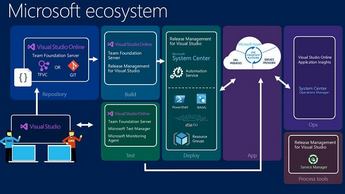






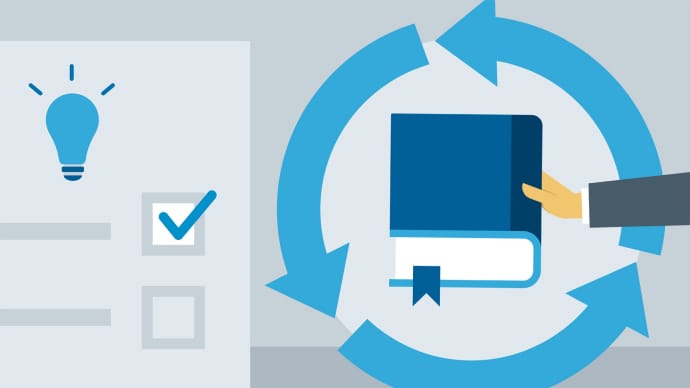



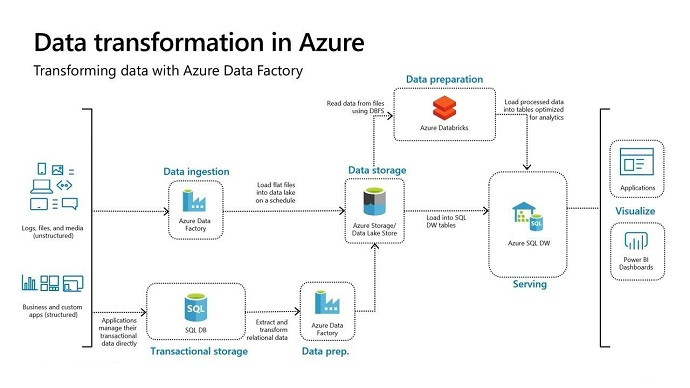









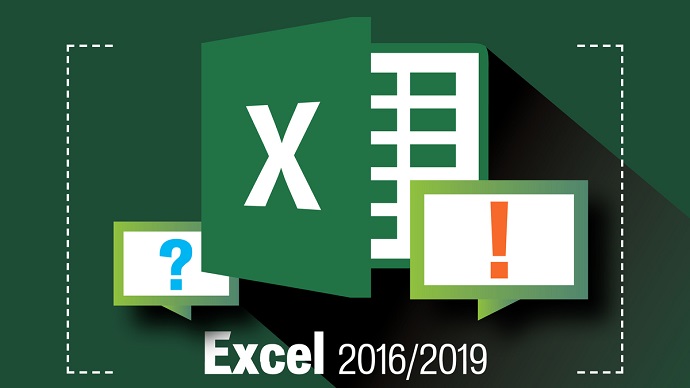





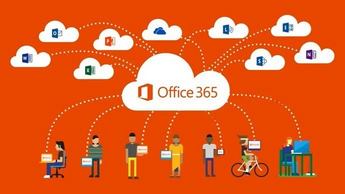
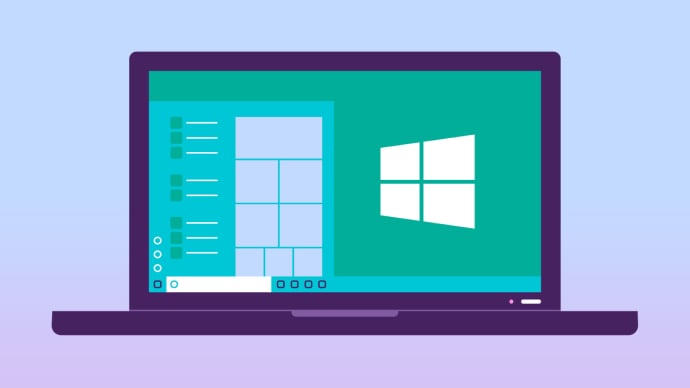








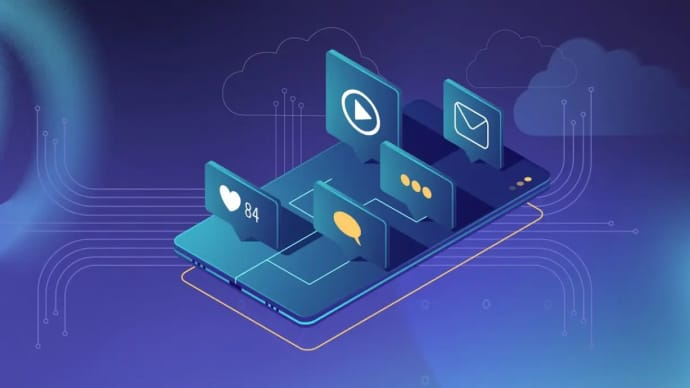
Only Registered Members can View Training Courses
Please fill out your email address below in order to view Training Courses. Registration is Free and Easy, You Simply need to provide an email address.
- Trusted by 1.2M IT Certification Candidates Every Month
- Hundreds Hours of Videos
- Instant download After Registration






